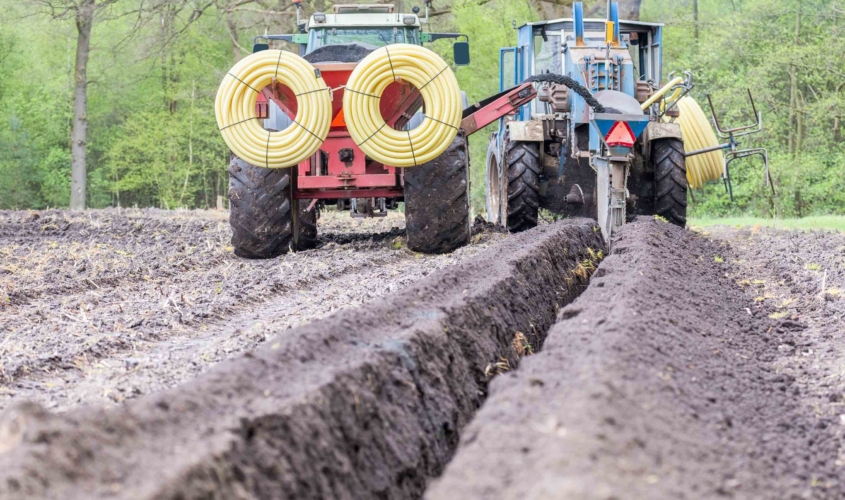WORKING SAFELY NEAR HIGH PRESSURE PIPELINES
Safe working near to buried high pressure pipelines is critical to protect both people and the planet. Here we outline some good practice guidelines for those working near to high pressure pipelines when undertaking agricultural work such as fencing, clearing ditches or installing drains, as well as any other activity that could pose a risk to the pipeline’s integrity.
Britain has more than 27,000km of buried pipelines used to transport a range of products at pressures of up to 100 bar. This includes flammable and explosive products such as oil, natural gas, ethylene and petroleum as well as less obviously hazardous material such as water.
Damage to these pipelines can pose a significant risk to life as well as potentially serious environmental damage if product is released. It can also lead to prosecution by the HSE as under the Pipelines Safety Regulations Act; “No persons shall cause such damage to a pipeline as may give rise to dangers to persons.”
Prior to working in the vicinity of high pressure pipelines, other than routine agricultural activities up to 300mm deep such as ploughing, seeding or harvesting – landowners should contact the pipeline operator who will provide any guidance or advice required. Contractors and temporary staff working on the land also need to be informed of where the pipelines are to discuss and agree with them the precautions they need to take before they start work.
One area of agricultural activity that has been identified as posing a significant risk to pipelines is the installation of drainage pipes. Installing drainage often requires heavy machinery and excavating close to the pipeline’s nominal depth of 1m. To prevent risks, anyone planning works within 3 metres of a buried pipeline needs to obtain permission from the pipeline operator. This is not to prevent the works, but simply to ensure that they are undertaken safely.
The location of pipelines is normally indicated by marker posts at the edges of fields, however, be advised that marker posts can be accidentally moved or damaged and that pipelines may not run in a straight line between posts. The depth of the pipeline’s cover may also be reduced in parts, so contact the pipeline operator in advance of any works and they can visit your land to locate and mark out the pipeline and advise what activities can and cannot be done safely.
If physical contact is made with a pipeline, shut down all working machinery and remove all sources of ignition. Evacuate all people from the immediate area and if the pipeline is leaking dial 999 to inform the emergency services. Do not attempt to seal a leaking pipeline and do not attempt to extinguish the fire (if one is present).
When the area is secure, contact the pipeline operator’s emergency telephone number that can be found on a nearby pipeline marker post, or from the communications you will have had from the pipeline operator. The pipeline operator will advise of next steps and will make the area safe.
To prevent damage to buried high pressure pipelines, and any subsequent prosecutions, always contact the pipeline operator in advance of works so they can advise you of good practices, locate and mark out the pipeline and supervise works if required.
BPA are available 24/7 to offer advice and support landowners. Contact us via the website or call 0800 585 387.



